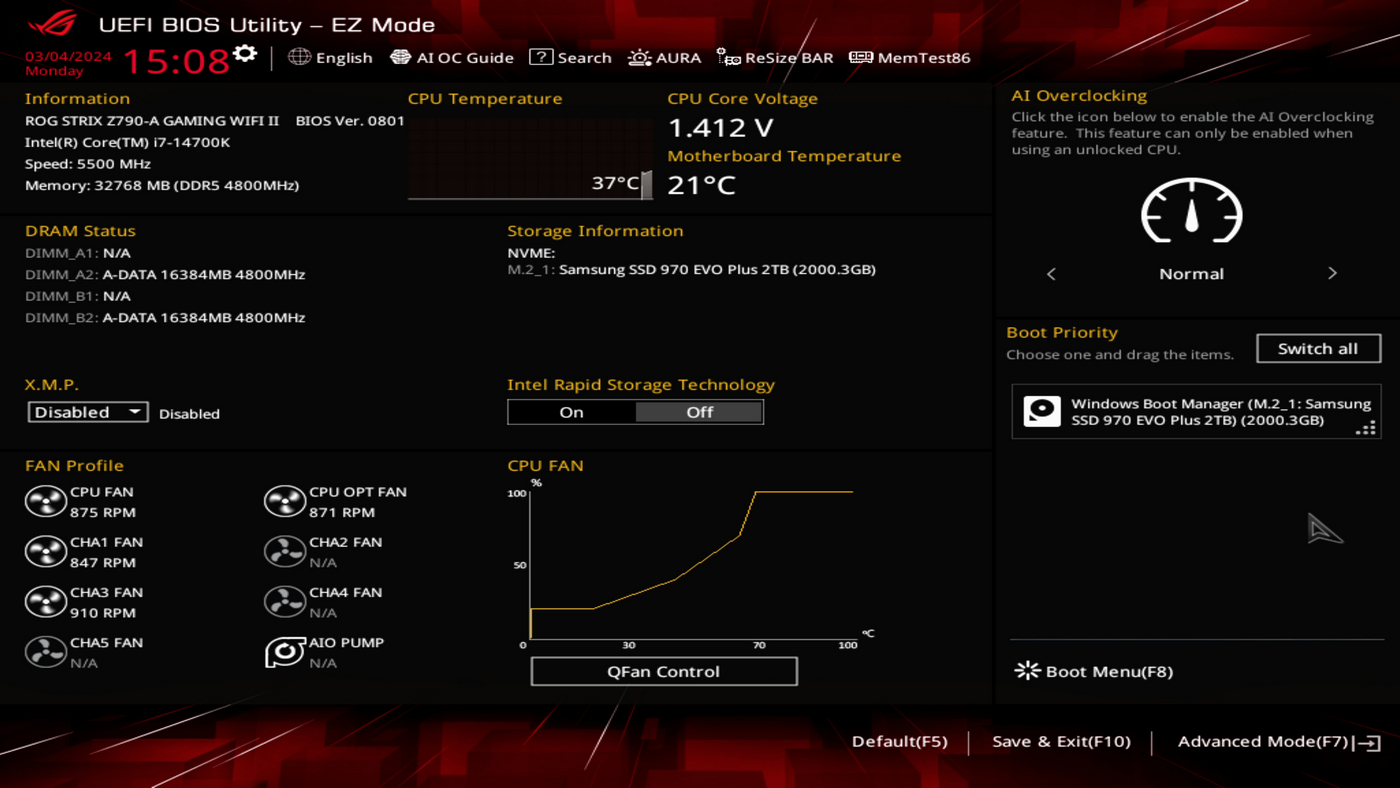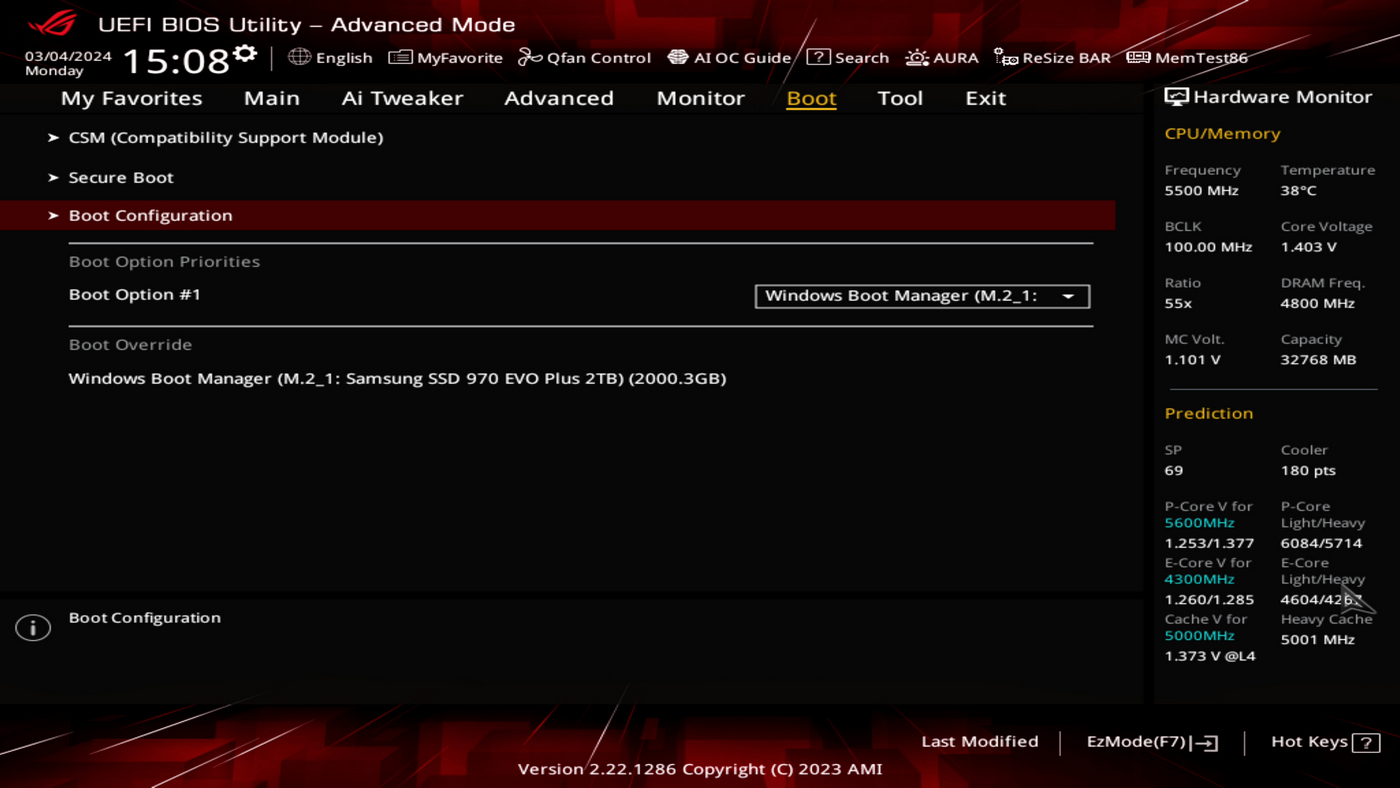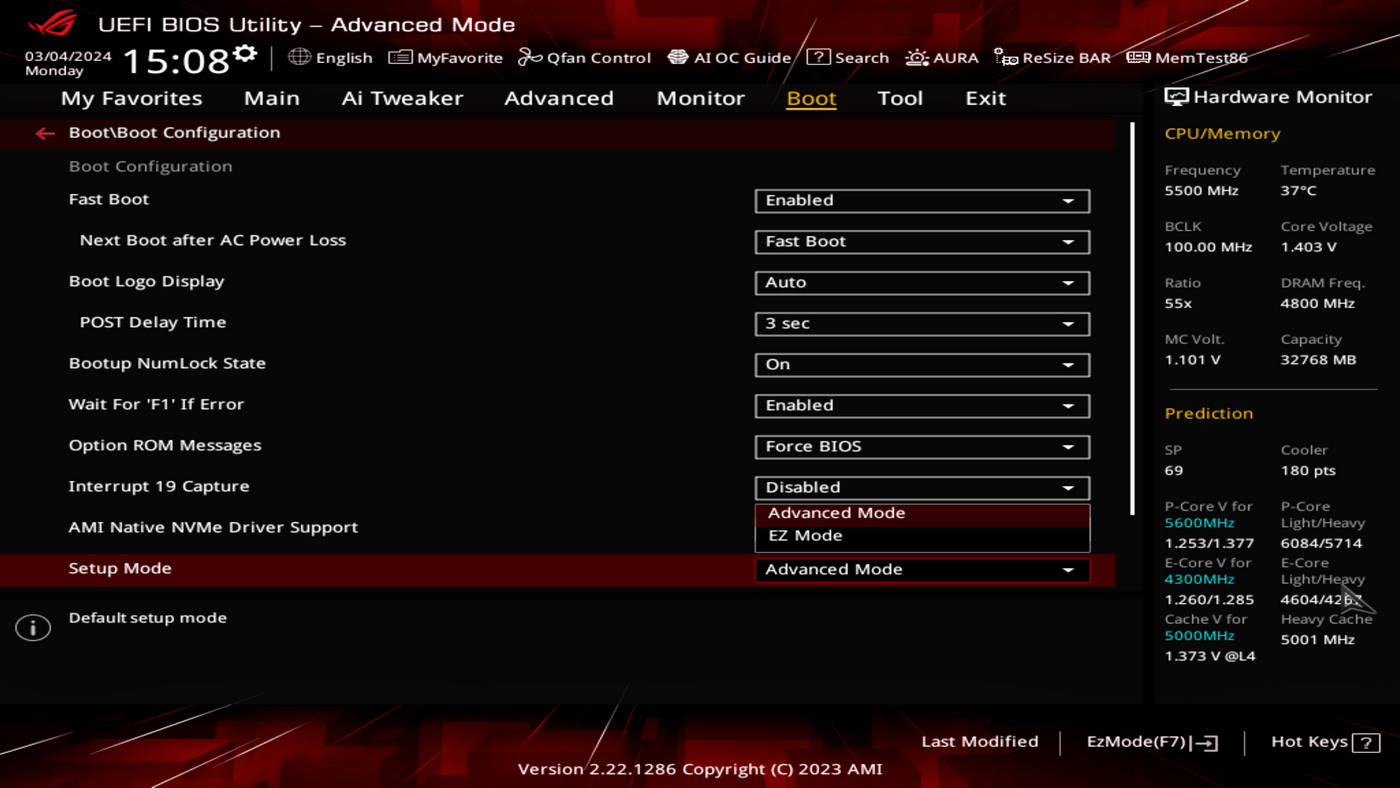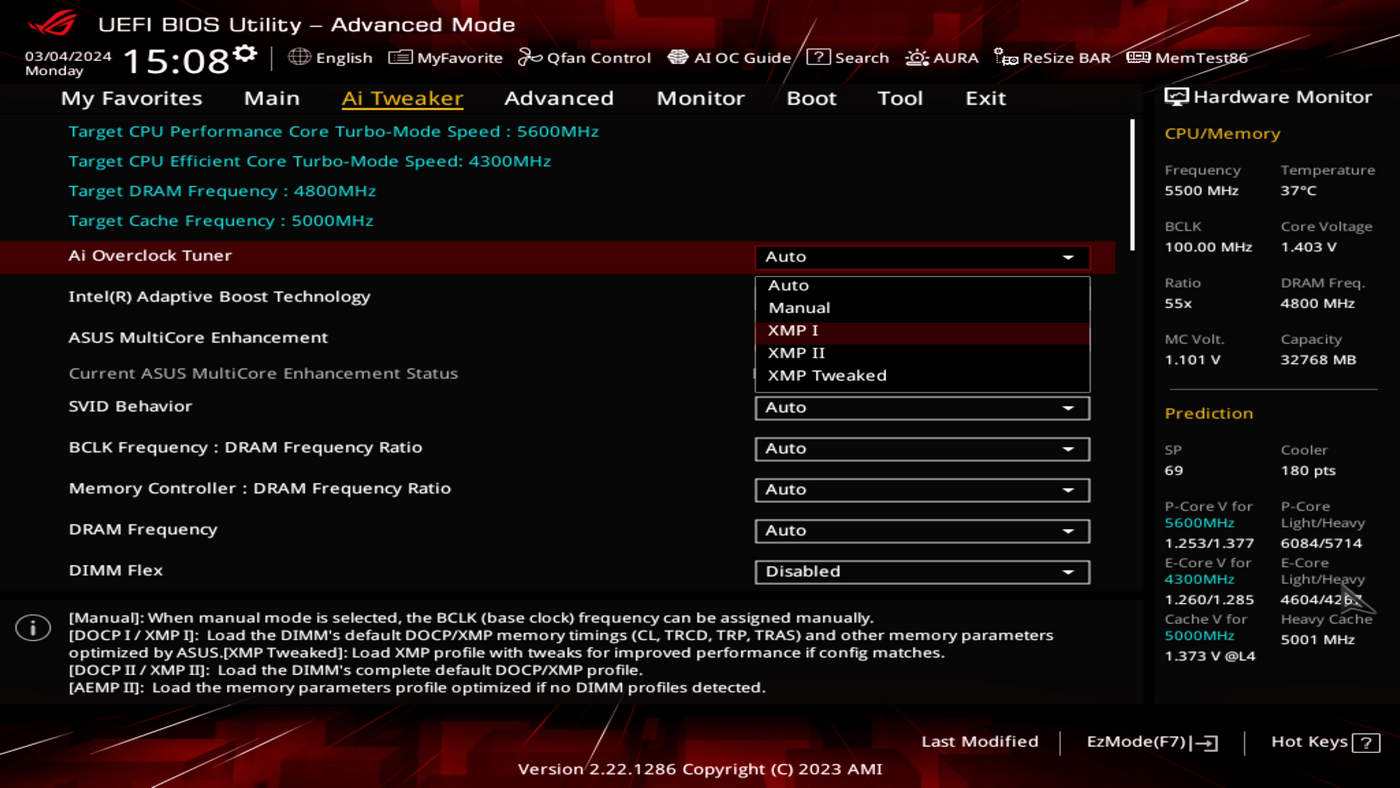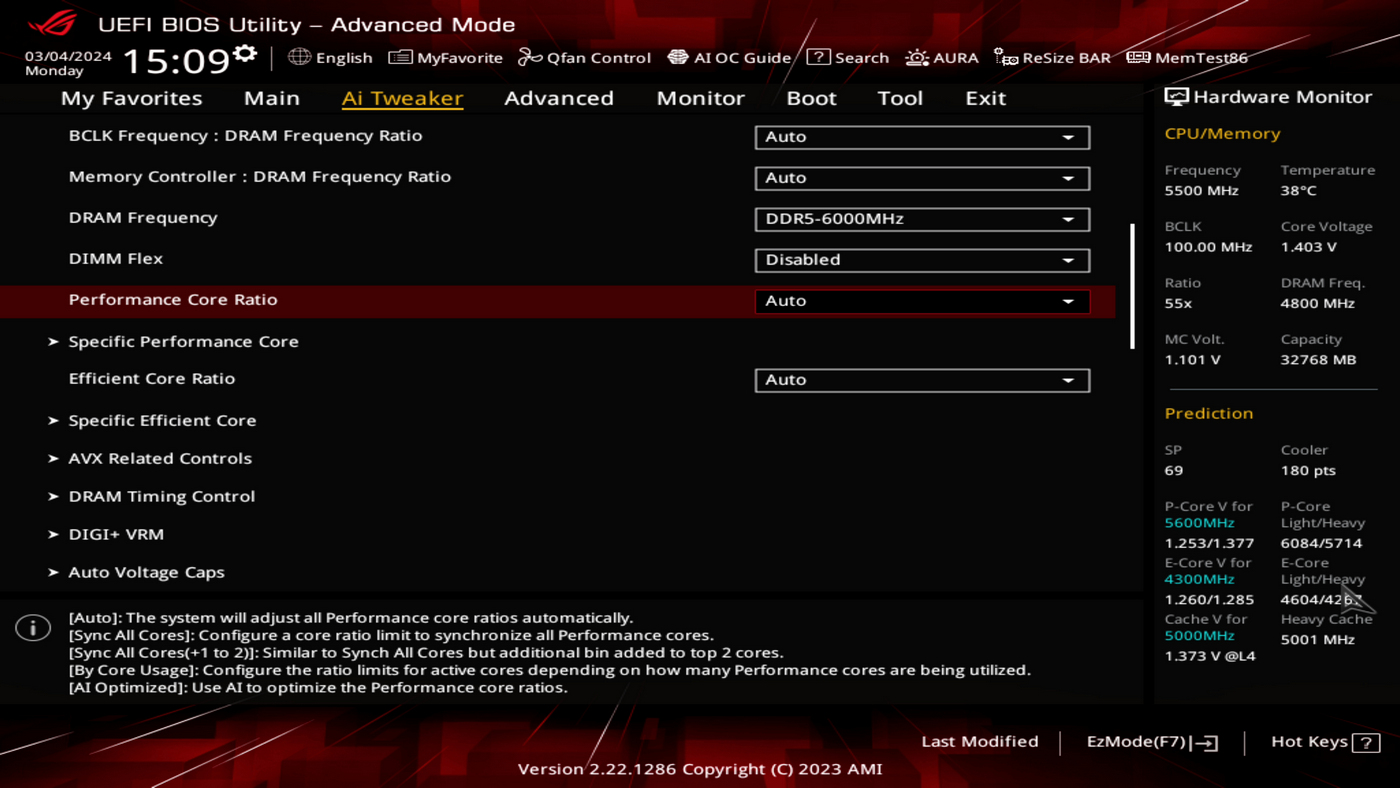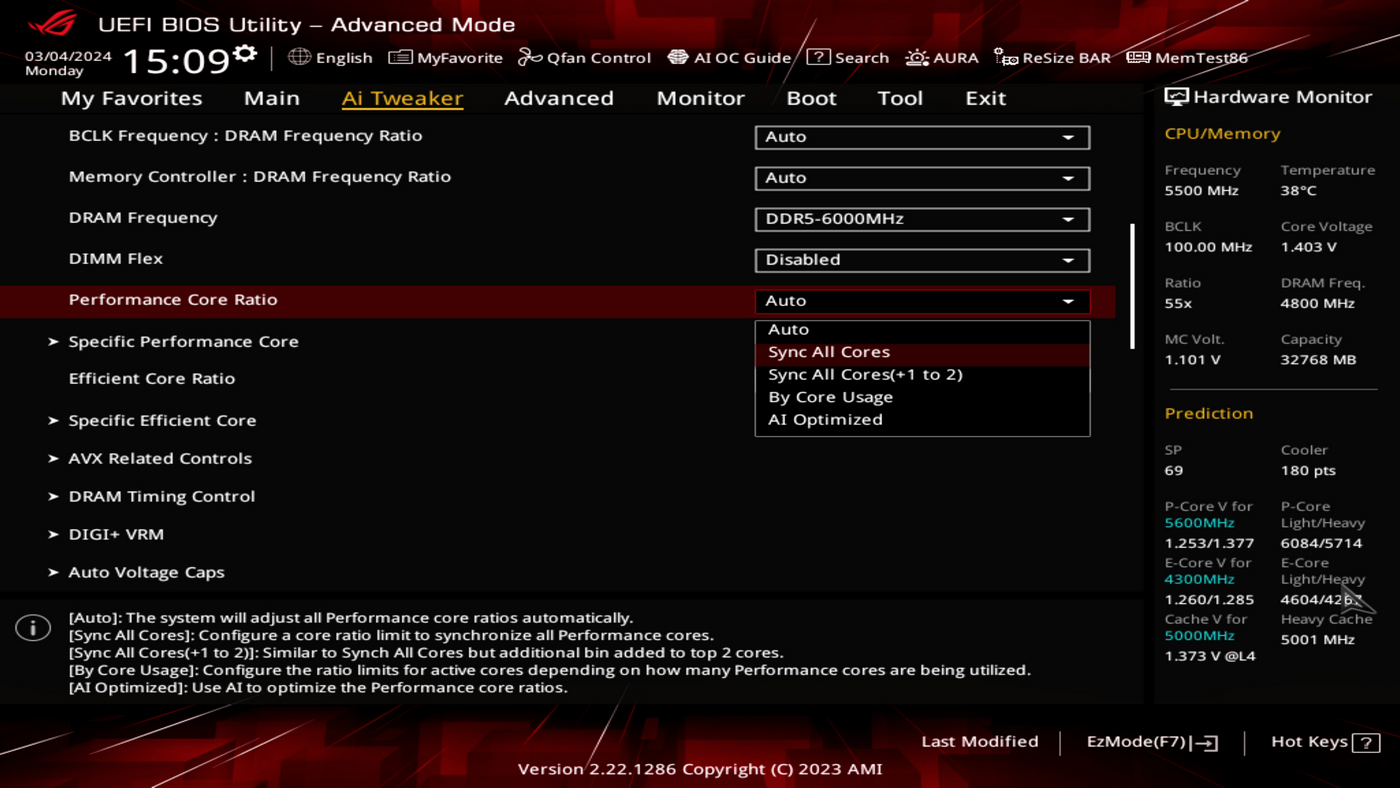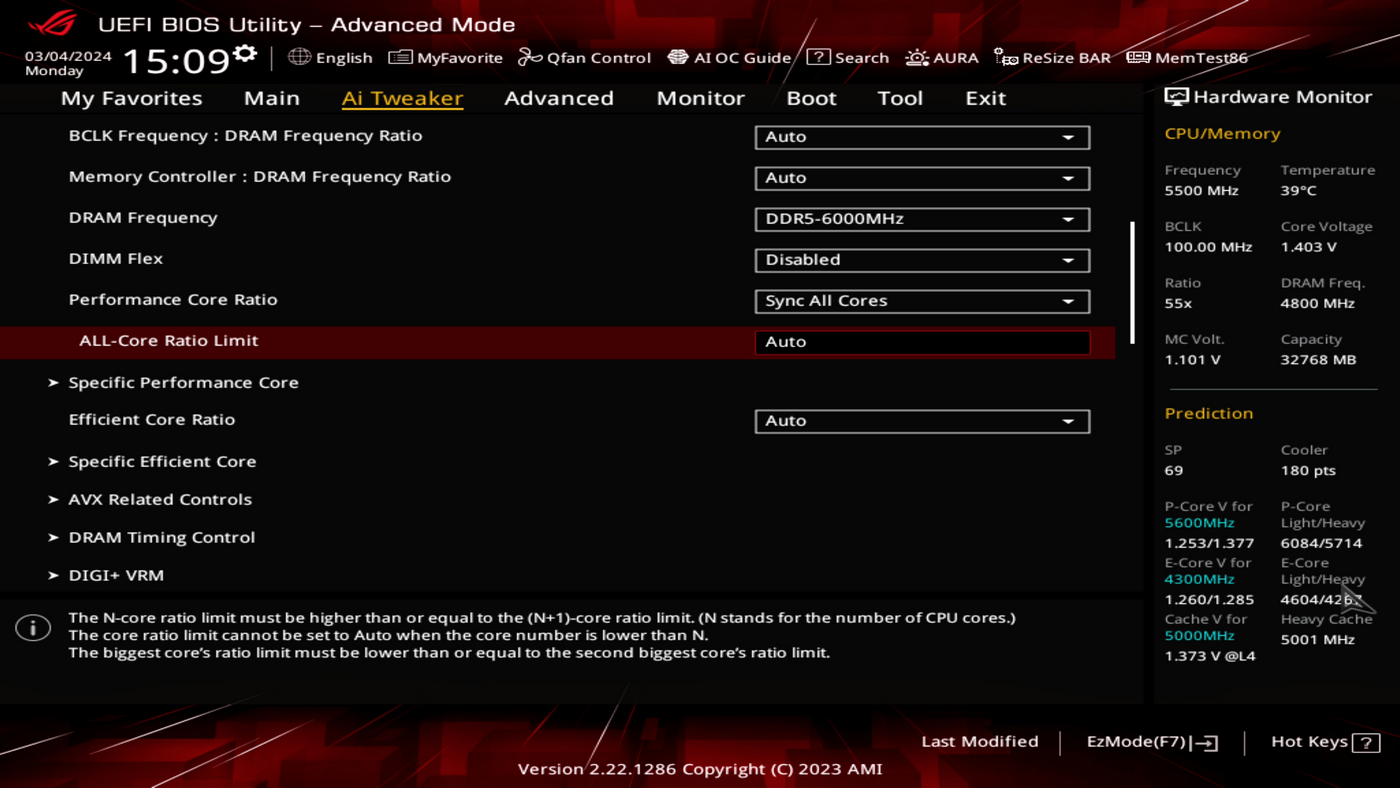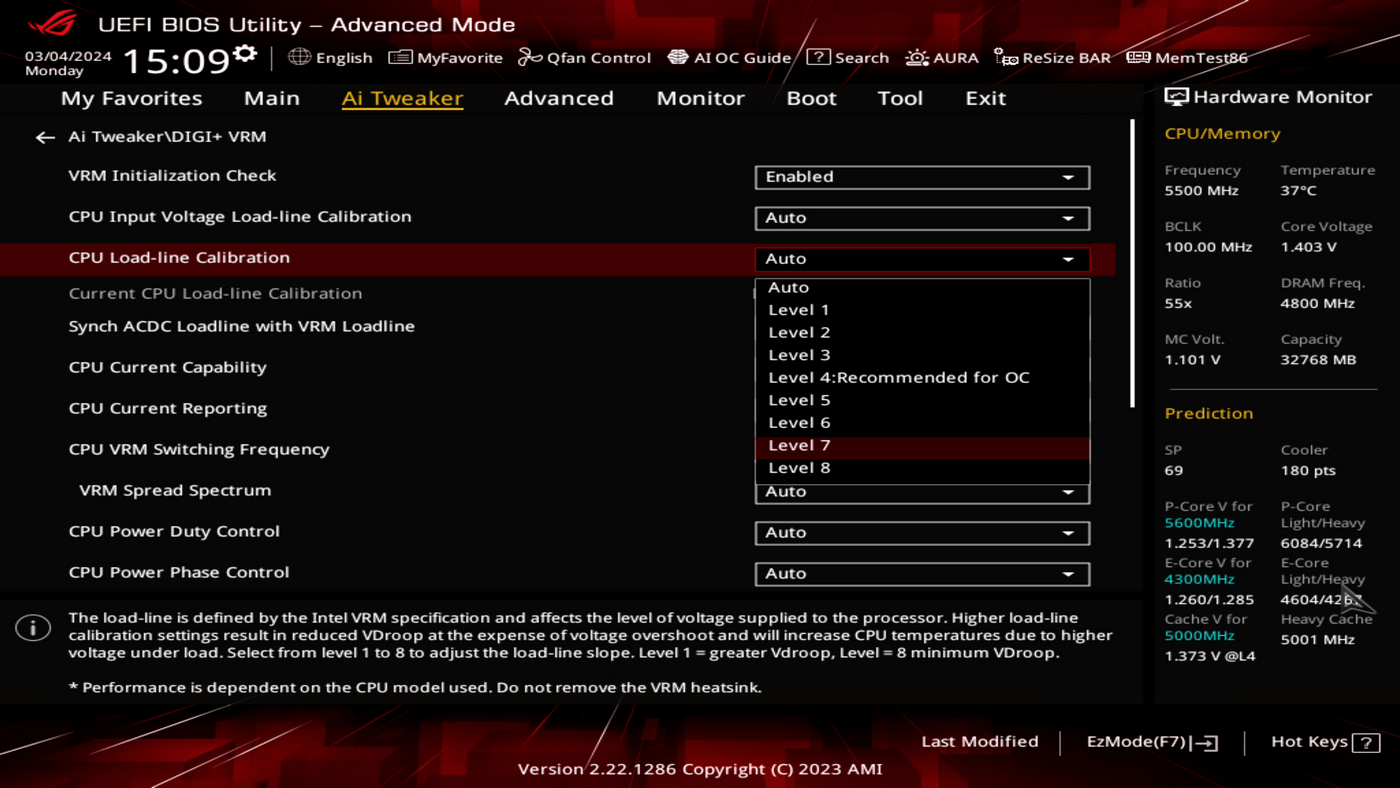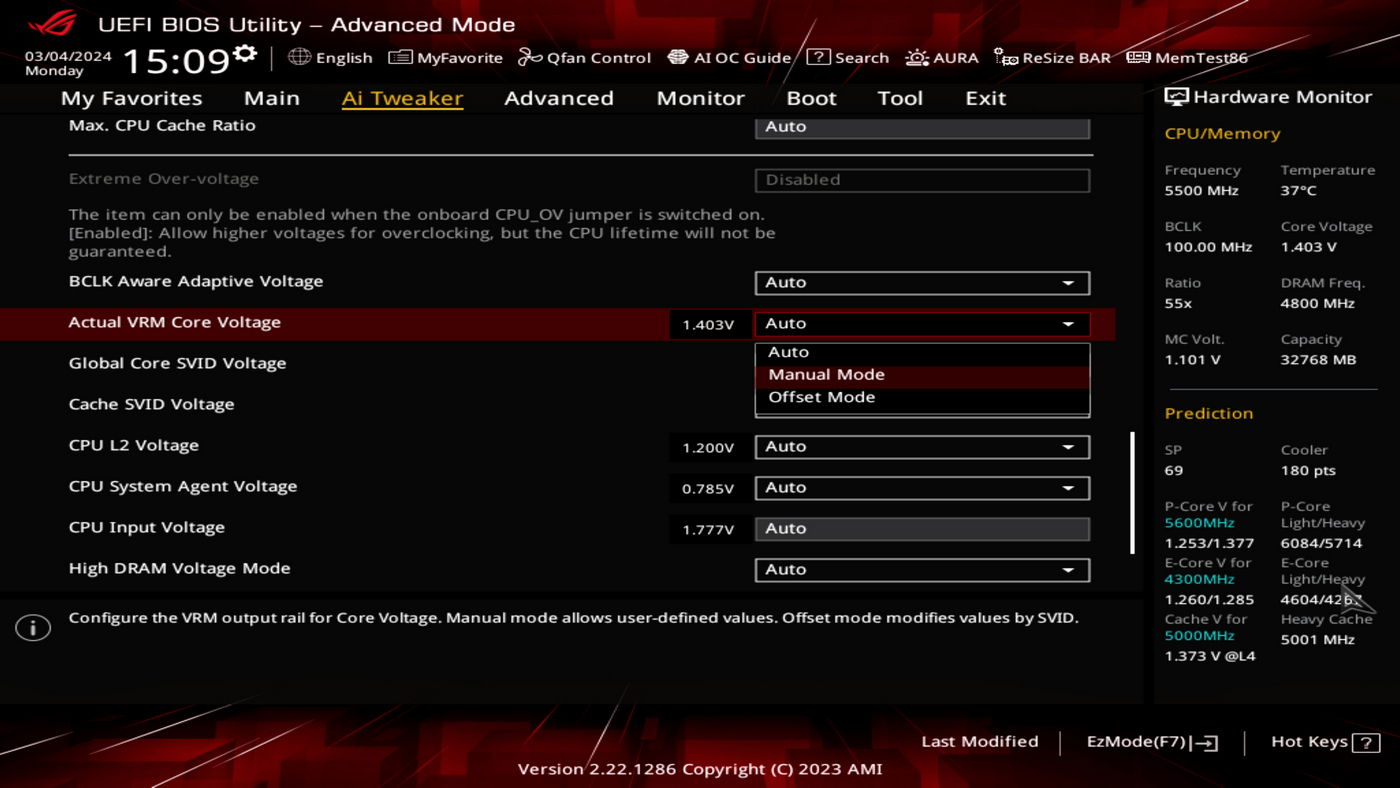Intel Undervolting Guide
ASUS Motherboards
ASUS BIOS Settings
This is the default screen you’ll see upon first pressing Delete. If you’re really new to this then turn on your PC and just tap delete until this screen appears.
It automatically boots into EZ mode, but for simplicities sake, and to speed up the rest of the process, click boot along the top, pick boot configuration, and select advanced setup from the Setup Mode drop-down.
Now the first thing to do is ensure your memory is running at its rated speed. On the ASUS it’s under Ai Overclock Tuner. Pick XMP 1.
This is optional, but can gain you a lot of performance if you want to go the extra mile. Open the drop-down box under Performance Core Ratio…
and pick “Sync All Cores”. As you can see from the handy guide at the bottom of the screen, this tries to match all P-Cores to the same speed/ratio.
Go down to the bottom of this screen and select the DIGI+ VRM option to open a submenu.
Here is where you can adjust the load-line calibration. This will be the key thing you’ll adjust in the beginning of your experiments. It reduces Vdroop, vital when we’re setting a fixed voltage so we get consistent performance. Generally you’ll need up near the top but, as we said on the methodology page, if the voltage is above that you’ve set then you can drop down a level. We’d start one from the top and then fine-tune as necessary.
Lastly, after you’ve set all that up and done a single Cinebench run you’ll know the peak voltage your CPU runs at. So we can go into Manual Mode and set that voltage 0.05v below the peak you saw in HWMon before. This is the screen you’ll return to a lot until you’ve hit the floor, after which you might lose consistent performance.




